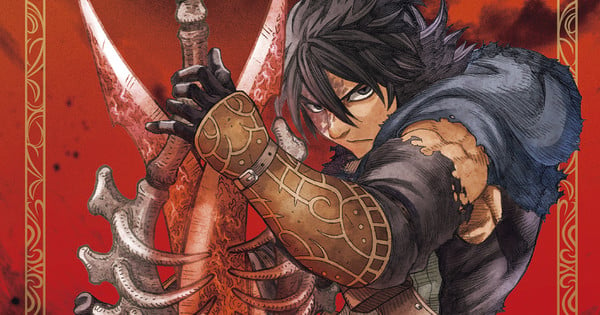Curated From www.animenewsnetwork.com Check Them Out For More Content.
Consisting of a whopping two volumes from start to finish, The Poetry of Ran is a bite-sized high-fantasy manga about a warrior called Ran. To be more specific, the manga begins with Ran arriving in a small village. Per the request of the village’s leader, Ran is there to save them from a giant monster called a “karma.” Yet, even though he’s there to help them, Ran is treated poorly by the villagers because he’s a “child of impurity,” a type of warrior who fights the karmas at least partially by taking on their curses. Although this turns out to be untrue, a lot of people seem to (wrongly) believe that this makes the children of impurity somehow contagious, so they’re often othered. But a local bard named Torue doesn’t care about this. Thinking it’ll inspire the creation of a great song, she quickly decides to follow Ran, who soon has to face his biggest (literally and figuratively) enemy yet.
If you care more about cool battles against monsters than a satisfying story, The Poetry of Ran will be a fun read for you. More on this in a bit, but The Poetry of Ran is gorgeously illustrated, allowing for some truly show-stopping fight scenes happening regularly throughout the manga. This is to say nothing of the enemies—the aforementioned karmas—who are both designed and drawn brilliantly. But outside of these fights, very little happens in this manga. In many ways, it’s just Ran taking on a boss-rush, with only smatterings of lore in between each fight. What little story this manga can be said to have (if it can be said to have a story at all) is massively rushed and underdeveloped in service to giving more time for the fights. But admittedly, given this manga’s length, that the story is so paper thin isn’t terribly surprising.
While it’s not impossible to create a satisfying, complete manga in only two volumes (or less), you’d be hard-pressed to find someone who didn’t tell you that it can often be an uphill battle. Some manga have accomplished this, yes. But the fact remains that there really is only so much you have time to accomplish in two volumes, and it’s almost an inevitability that some things will slip through the cracks at some point or another. And one can’t help but feel hyper-aware of this whilst reading The Poetry of Ran, whose concept so obviously lends itself more readily to being a long-form story—probably a battle shonen, or something close to that—than a blink-and-you’ll-miss-it two volumes. Furthermore, there are fragments of interesting world-building sprinkled throughout The Poetry of Ran—a breadcrumb trail that, if this manga were only longer, feels like it could easily lead to somewhere interesting. Yet this world-building ultimately goes to waste, as the manga’s length doesn’t really grant it time to do anything significant with it. Essentially, what I’m getting at here is that The Poetry of Ran feels incomplete.
That the story is so rushed and incomplete is highlighted by this manga’s cast of cardboard cutouts, none of whom do much to stand out. While this is also true for the small number of side characters introduced throughout the manga, this is especially true for its central protagonists, Ran and Torue. Admittedly, there’s at least some tangible effort in making Ran feel like a distinct character, as he’s given a backstory and a few quirks. But none of these are particularly unique nor engaging in any way, so he still can’t help but come off as generic. As for Torue, she mostly just breasts boobily and follows Ran. She probably does more singing than speaking, but that hardly matters because, not being a warrior, there’s not much for her to do other than observe. But she’s transparent from the get-go about wanting to watch Ran’s adventures, so her idleness isn’t necessarily surprising, nor would I go so far as to call it wasteful. It just means that she’s never really given any time in the spotlight, so by the end, the reader still barely knows her.
Despite all this manga’s many shortcomings, however, it has an incredible asset in its art. In particular, the backdrops, townscapes, and karma are simply jaw-dropping in their level of detail. The people are drawn well, too, don’t get me wrong—and their designs are pretty solid, as well. But it’s the more large-scale elements—the breathtaking architecture, and nightmarish karmas—that allow author and illustrator Yūsuke Ōsawa to flex his creative muscles to their fullest.
This manga is unimpactful, and if not for the beautiful, meticulously detailed art, I’d say nothing about it stands out at all, either for better or for worse. It’s a perfectly middle-of-the-road slice of high fantasy that probably won’t be cutting anyone’s list of all-time favorites but also isn’t likely to be ranked among the genre’s all-time worst. That being said, the art is very much worth a look—and since this manga is so short and non-committal anyway, I could see how someone could end up simply reading the whole thing if only because they just wanted to admire the art.
